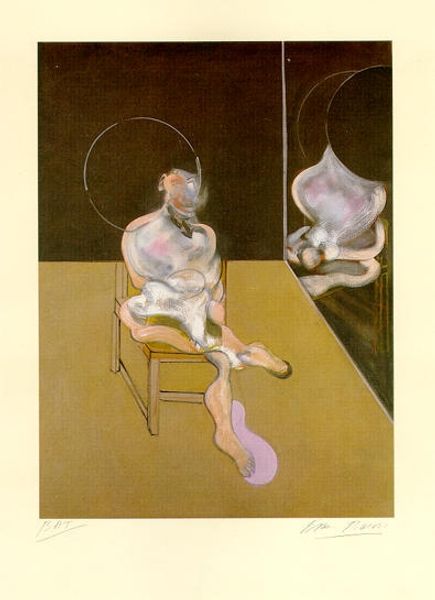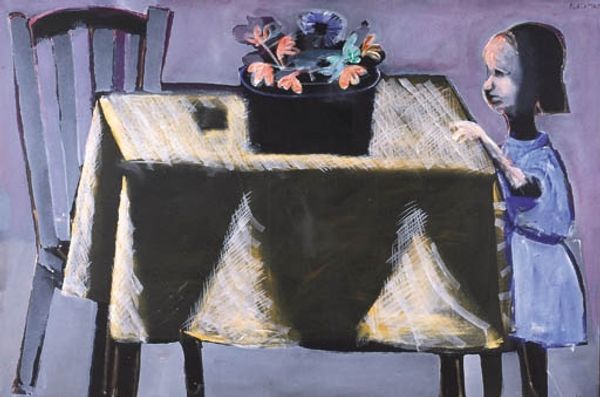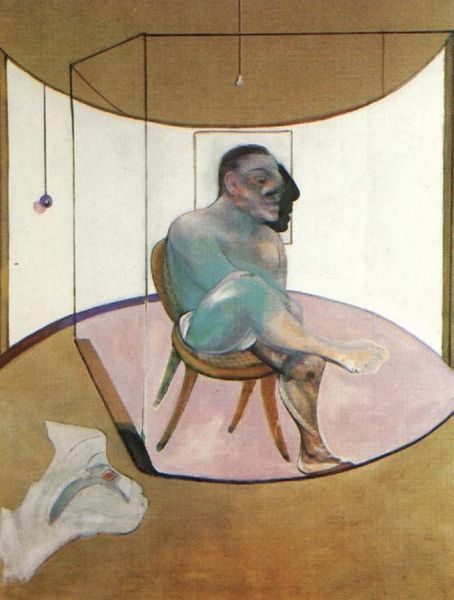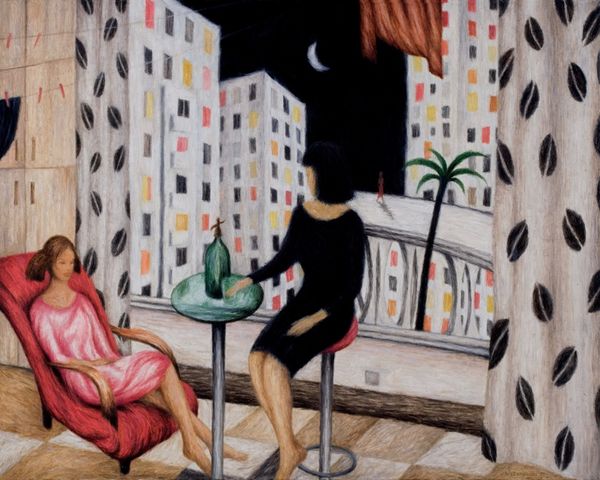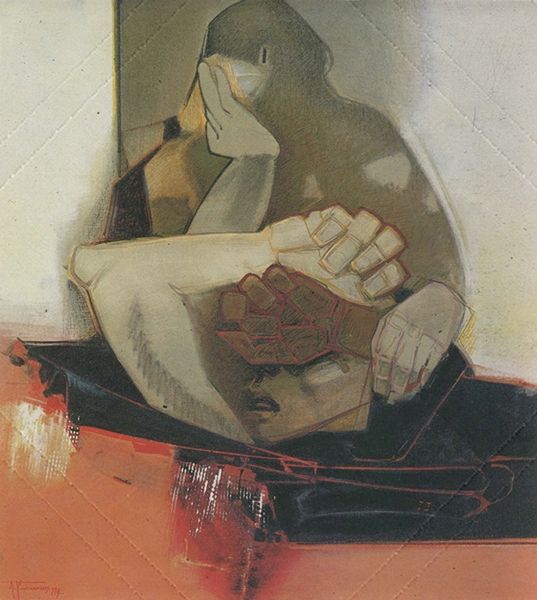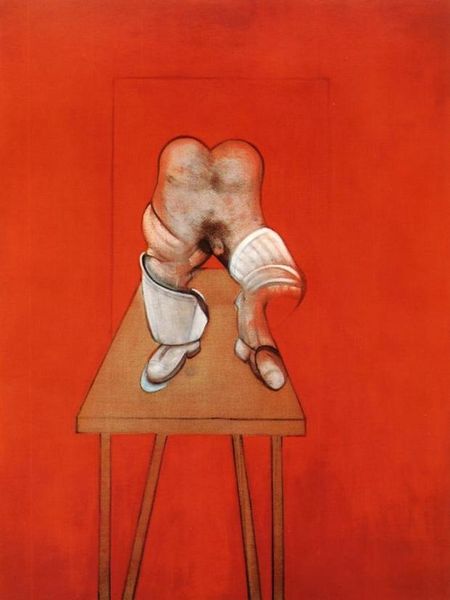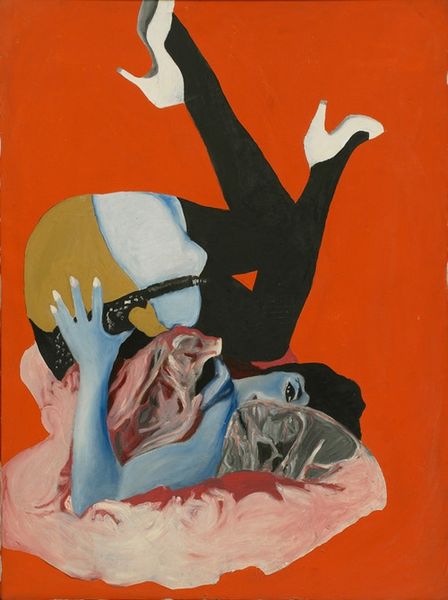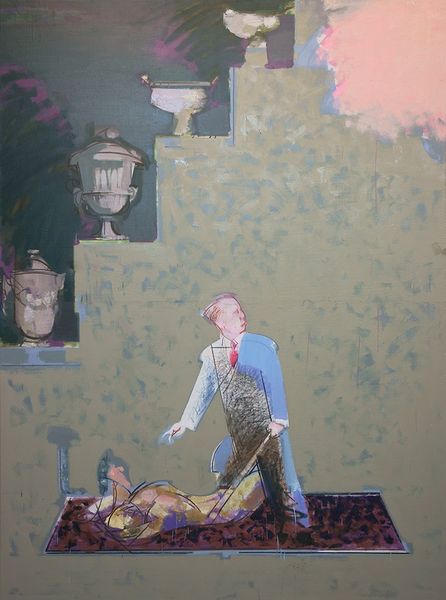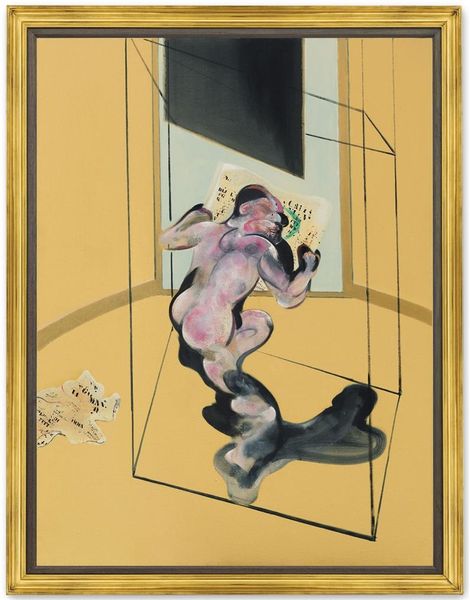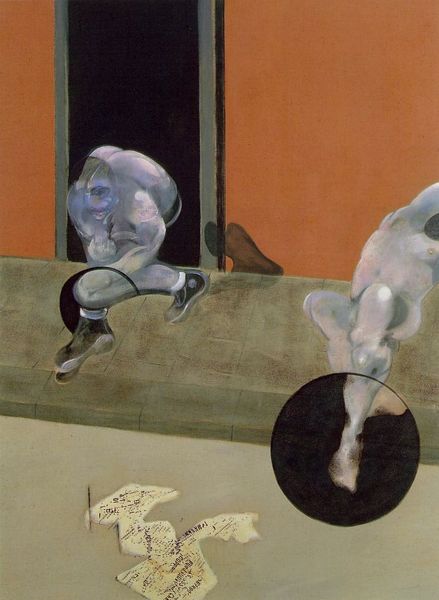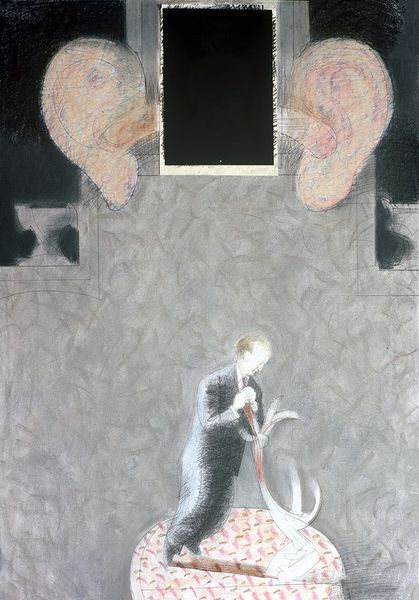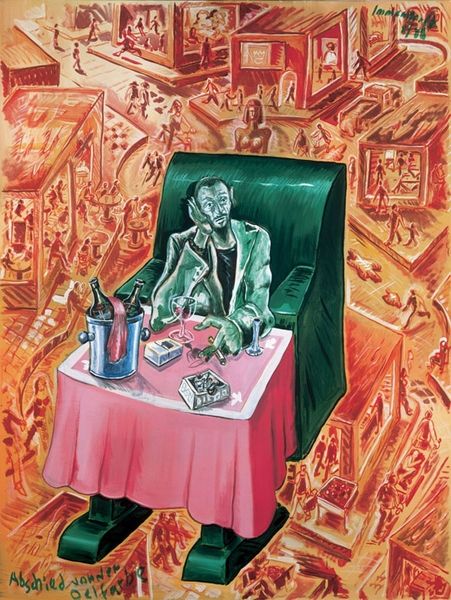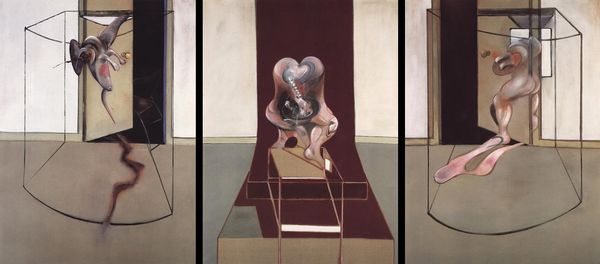
Dimensions: 198 x 147 cm
Copyright: Francis Bacon,Fair Use
Editor: Here we have Francis Bacon’s “Self-Portrait” from 1973, rendered with oil paint. The figure seems weighed down by something… almost as if gravity itself is intensified around him. What strikes you when you look at it? Curator: The intense materiality is unavoidable. Look at how Bacon uses the oil paint itself to distort and reform the human figure. The paint application isn't just representation, it’s an active transformation, mirroring the social and economic pressures shaping the individual. Does the visible texture of the brushstrokes, almost violent in places, suggest anything about the act of creation itself? Editor: It does make me think about the physical effort, the almost frantic energy, he put into it. But what about the setting, that clinical sink for instance? Curator: Exactly. A readymade object finds itself recontextualized through the labor of the painting process. A mundane item is presented with the same materiality as the figure, blurring the boundary between body and environment. Doesn’t this placement almost make the artist another disposable commodity in his own life? Editor: So, by emphasizing the material properties and process, we’re seeing more than just a portrait. We're seeing a statement about existence under specific conditions? Curator: Precisely. The labor invested in both the subject’s life, as signaled by his very material existence, and Bacon's creation pushes us to consider these intersecting forms of production and consumption. It's an honest look at the materials we use, but how we’re used by materials as well. Editor: It never occurred to me that a self-portrait could hold such depth regarding material analysis, production, and value! Curator: It's about considering the raw ingredients that come together. Recognizing the artist's labor is fundamental.
Comments
No comments
Be the first to comment and join the conversation on the ultimate creative platform.
